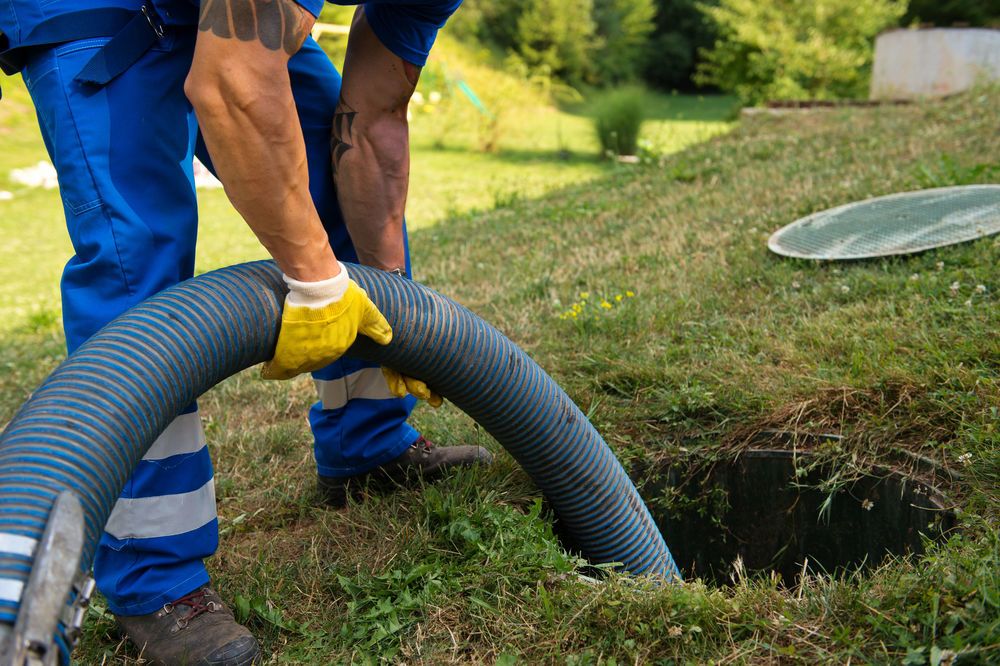Next Modular can help you save money when you build a new home. One way of doing that is by giving you the option of finishing out the build yourself. Our company will pour the foundation and set your new modular home. Then you can DIY the rest of the build or contract out the labor locally, using your company of choice. To help you prepare, we are putting together a series of articles that will give the basic information you need to proceed with those next steps after the house is set. This article details the basics of installing and maintaining a septic system.
What Are the Different Types of Septic Systems?
There are 5 different types of septic systems, which means that installation methods vary.
1. Conventional Septic Systems
Conventional septic systems consist of a tank and a gravel drainfield. Wastewater flows through pipes from the house to the tank and then to the drainfield. The tank breaks down the wastewater, while microbes in the soil treat the water as it flows toward the drainfield.
2. Chamber Systems
A chamber septic system is similar to a conventional septic system. However, the pipes release the water into “chambers” of soil, rather than gravel.
3. Aerobic Septic Systems
An aerobic septic system uses a high-powered method of treating water that allows for a smaller drainfield. Added oxygen aids in bacterial treatment, making aerobic systems a good choice for homes with high water tables or poor soil.
4. Drip Distribution
A drip distribution system releases wastewater into soil one drop at a time. A second septic tank controls how quickly the water drips and receives treatment.
5. Mound Septic Systems
In a mound septic system, a pump releases wastewater into a mound of sand sitting near the home. Mound systems require extra maintenance, but they are helpful in locations with low soil levels.
Steps for Installing a Septic System
Since each septic system is installed a little differently, it would be difficult for us to give you an exact how-to on installing each one. That said, the overall process for septic system installation has some similarities.
1. Site Prep
First, you evaluate the site’s size, soil type, water table, etc. so you can decide which type septic system will work best for you. This may require a PERC test to evaluate soil absorption rates. Contact your county health department to find out more information regarding testing requirements in your area.
2. Health Approval
Most states have specific guidelines in place for septic system installation, as sewage naturally could have a large impact on public health and safety. You will need to receive the necessary permits and licenses to continue with the procedure.
3. Excavation
Once you have received the go-ahead from the correct authorities, you may begin excavating the site for system installation. Excavation involves a lot of measuring and drilling so that you can get the pipe to distance ratio correct. You will need to dig a hole large enough to fit the tank into comfortably.
4. Installation
It is important that you refrain from going into the installation blindly. That is, don’t just begin haphazardly digging holes and placing pipes. Call a professional septic system company for advice, or do your research online.
5. Final Inspection
It’s a good idea to have a professional inspect your work once completed. This ensures that everything is up to safety standards and that you won’t run into any unexpected issues.
6. Coverup
Cover everything back up, clean it up, and enjoy your money-saving handiwork!
Additional Tips for Septic System Maintenance
While it is important to install your septic system properly, it is equally important that you take proper care of it. Good septic system maintenance increases the system’s lifespan, saving you money on an early replacement.
1. Schedule routine maintenance and cleaning.
Professional septic system maintenance is key in preventing small problems from turning into big problems. You should schedule a tune-up every year or so, and a septic tank pumping every couple of years (depending on the tank capacity).
2. Be careful what you flush.
If it isn’t toilet paper, do not flush it. Paper towels, napkins, baby wipes, diapers, and feminine products belong in the trash, not in the toilet. Foreign matter can cause septic pipes to clog and burst.
3. Keep your eyes and ears open.
Inspect your septic system yourself to make sure everything is running smoothly. If you notice anything out of the ordinary, call a professional as soon as possible.
4. Take care of the drainfield.
Drainfields do not function well near trees or under heavy foot traffic. Keep the area clear for maximum functionality.
If you’d like to know more about the benefits of modular home building or have questions about our services, do not hesitate to call us today. We know that choosing a home is likely one of the most important financial decisions you will make. As an experienced modular home builder, we are committed to being your guiding light through this process.


